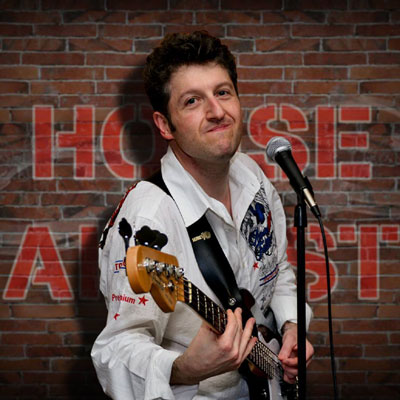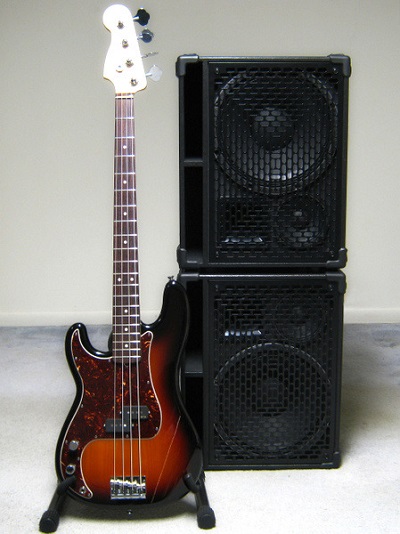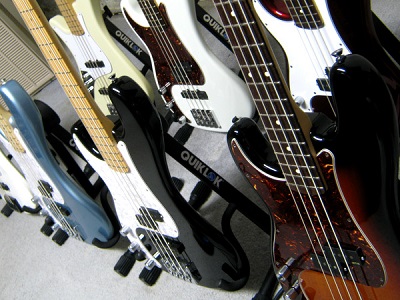Bass Rig Breakdown

Charlie Caldarola
Bass "House Arrest"
Interview by Roger Zee (03/25/19)
Roger Zee: How did you come up with your current gear?
Charlie Caldarola:
First off, thanks, Roger, for featuring a bass player, let alone me, in your first Westchester Rig Breakdown. I'm honored and quite admittedly a gear nerd. Congrats to you on becoming our own local John Bohlinger of Premier Guitar fame. As a musician north of 30 years, I've played, owned, and flipped through a ton of equipment and instruments. Sure, I'm grateful for the long journey, but will not lie in saying that I wish I could recoup a little bit of that money spent along the way. Even as a seasoned, gigging bassist, I still face the same challenges as many do and hope to share some of my secrets in this Breakdown.
Roger Zee: Tell me about your instruments.
Charlie Caldarola:
Having been around the bass block a few times, it may now be safe to say that I have finally landed. In my opinion, Leo Fender got it right the first time with the Precision Bass, but it sure took long enough to figure this out for myself. Four strings, one pickup, volume and tone. It sits so well in the band mix. Depending on the set list requirements, I sometimes use a P Bass with a Jazz Bass pickup in bridge position for some pointed tone options. I bring only one bass to the gig with a set of spare strings just in case. I use Ernie Ball Hybrid Slinky Strings (.045, .065, .085, .105) and I use passive EMG Geezer Butler pickups in almost all of my basses, as I have found these serve my needs best. EMG's solderless connectors and pot controls included in their kits are top-notch. No batteries required.
Roger Zee: What effects do you use?
Charlie Caldarola:
Although more associated with modern guitar players, my rig's completely based on Line 6's Helix platform and as such I really only use one effect box, an HX Stomp pedal. The Helix handles all amp and cabinet modeling, along with any typical effects that may be needed per song (e.g. octave, modulation, filters, etc.) The HX Stomp stays always on for me and easily controllable by foot. DSP modeling technology in general has advanced so much over the years that I'm firmly a believer. It is now possible to have a complete pro-level rig in a box, even if you only play four strings! The tone I send to front of house (FOH) is fully processed by Helix and is exactly the tone I monitor while playing. I no longer rely on a traditional bass amp and cabinet to create my sound. One really great live feature in using DSP is the ability to drop-pitch my bass to any practical key as required by my vocalists. No more re-tuning or need for different instruments on stage. For any cover band that alone's a huge feature to have.
Roger Zee: Talk to me about your amps and cabinets.
Charlie Caldarola:
I perform using the Greenboy Fearless F112s cabinets which monitor the bass signal sent to FOH. They provide full range, flat response (FRFR) reproduction. These custom cabs use top-shelf Eminence and Faital drivers to yield extremely smooth, high output that bass frequencies require, especially when keeping up with a live drummer. They have been compared to studio monitors on steroids and will hump your leg when nearby. Since they use passive speakers, I power them with a Quilter Bass Block 800 set flat, but the Quilter's front panel EQ makes it easy to fine-tune problematic venues as need be. Incidentally, Pat Quilter, the designer of the amp, is the Q in the brand QSC. Together this amp and cab pairing works well for me and scales to the places we play, both indoors and out.
Have you reached the end of the tunnel with your equipment?
Charlie Caldarola:
I aimed to create a lightweight, modular, powerful system with some modern fringe benefits, and I think I succeeded. The running joke I have when speaking with other musicians is saying that "I need all this stuff just to sound like bass", but it's so true!

 ©2019 Roger Zee
©2019 Roger Zee


 ©2019 Roger Zee
©2019 Roger Zee